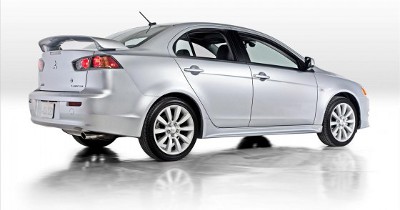Lancer Exhaust Videos
- 2002 Mitsubishi Lancer Exhaust Systems
- 2003 Mitsubishi Lancer Exhaust Systems
- 2004 Mitsubishi Lancer Exhaust Systems
- 2005 Mitsubishi Lancer Exhaust Systems
- 2006 Mitsubishi Lancer Exhaust Systems
- 2007 Mitsubishi Lancer Exhaust Systems
- 2008 Mitsubishi Lancer Exhaust Systems
- 2009 Mitsubishi Lancer Exhaust Systems
- 2010 Mitsubishi Lancer Exhaust Systems
- 2011 Mitsubishi Lancer Exhaust Systems
Lancer Exhaust System Tips

Fun to drive cars come in all sizes and shapes, but the Mitsubishi Lancer seems to be in a class all by itself. Yes, it has worthy competitors as found in the Mazda3, Ford Focus and the Honda Civic, but the Lancer’s rabid followers of tuner enthusiasts know that this is the only car for them.
Introduced in 2002, the Mitsubishi Lancer replaced the Mirage, a nondescript compact sedan. Mitsubishi was looking for a winner in the ultra-competitive compact car segment and went to work on developing a car with style, speed and the persona to match. The tried-and-true Lancer name was hauled out, used previously on various built-for-Chrysler Mitsubishi models since the 1970s. You should consider today’s Lancers as a distinctively separate model line.
First Generation
The 2002 Mitsubishi Lancer offered the sporty styling, but wasn’t much different from the previous Mirage when it came to performance. A 2.0-liter four cylinder was its sole motor, rated at 120 horsepower at 5,500 rpm and 130 foot-pounds of torque at 4,250 rpm. The 2001 Mirage offered a slightly smaller engine, but still managed to bang out 111 hp.
Fortunately, it didn’t take long for Mitsubishi to get a clue, perhaps that clue came as the company observed a performance parts market developing to outfit the Lancer and at a level not enjoyed by the Mirage. Soon, the Lancer Evolution was born, a sub-model that showed enthusiasts what they could do to their rides or have Mitsubishi do it for them.
Indeed, the Lancer Evo, a Japan-spec model was brought stateside in 2003, powered by a 2.0-liter turbocharged engine paired with 6-speed manual transmission. Rated at 271 horsepower at 6,500 rpm and 273 foot-pounds of torque at 3,500 rpm, the all-wheel-drive Lancer Evo immediately established itself as a threat to the long dominant Subaru Impreza WRX. Indeed, the Lancer Evo quickly raised the performance benchmark for compact cars, an area where it leads today.
Second Generation
With the arrival of the 2008 model year came the second generation Mitsubishi Lancer. This model looked sportier and was offered in three trim levels: DE, ES and GTS. Power was increased and the Lancer was now rated at 152 horsepower and 146 foot-pounds of torque. Importantly, the Lancer Evo was back and in 2010 the Lancer Sportback, a four-door hatchback returned.
The 2011 Mitsubishi Lancer Evo is rated at a blistering 291 horsepower at 6,500 rpm and 300 foot-pounds of torque at 4,000 rpm. Paired with a 5-speed manual or optional 6-speed twin-clutch sportronic shift transmission, the Evo goes from zero to 60 mph in under 5 seconds or as low as 3.5 seconds if you believe the accounts of rabid fans who have been known to exaggerate when given the chance.
Then again, any Lancer equipped with a performance exhaust system, cold air intake, turbo kit and other fun aftermarket devices just may be able to push the envelop a bit more, enabling devotees to back up their performance claims.
The list of brands offering exhaust parts and systems for the Lancer is extensive:








